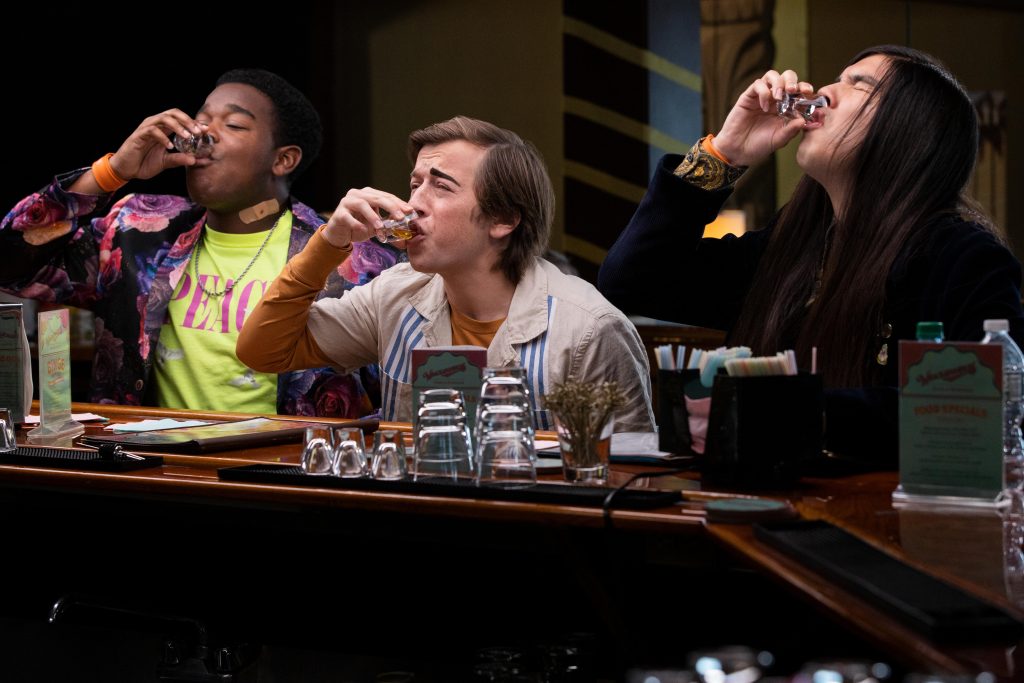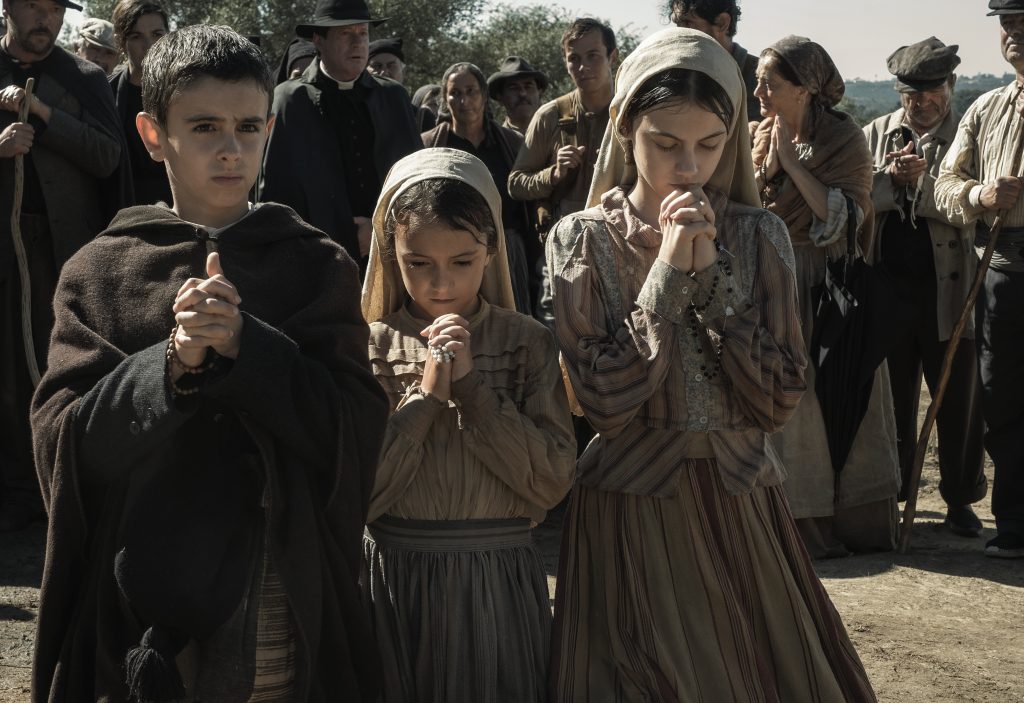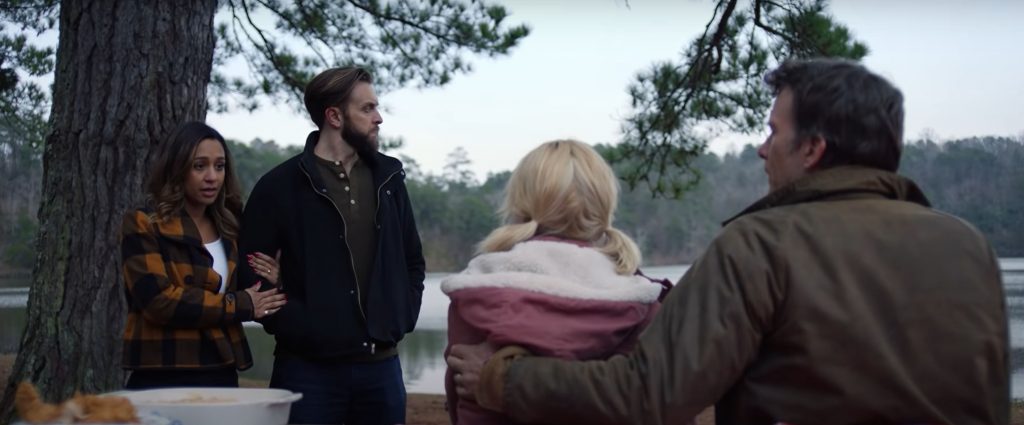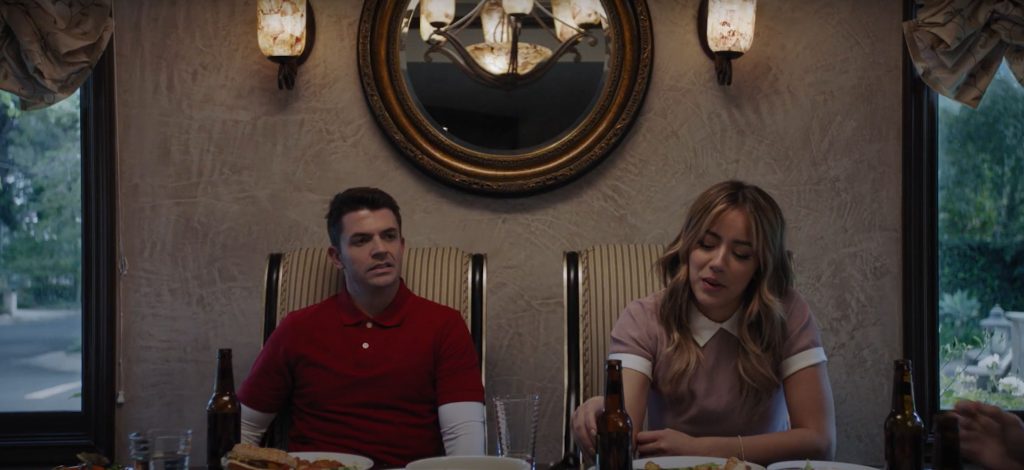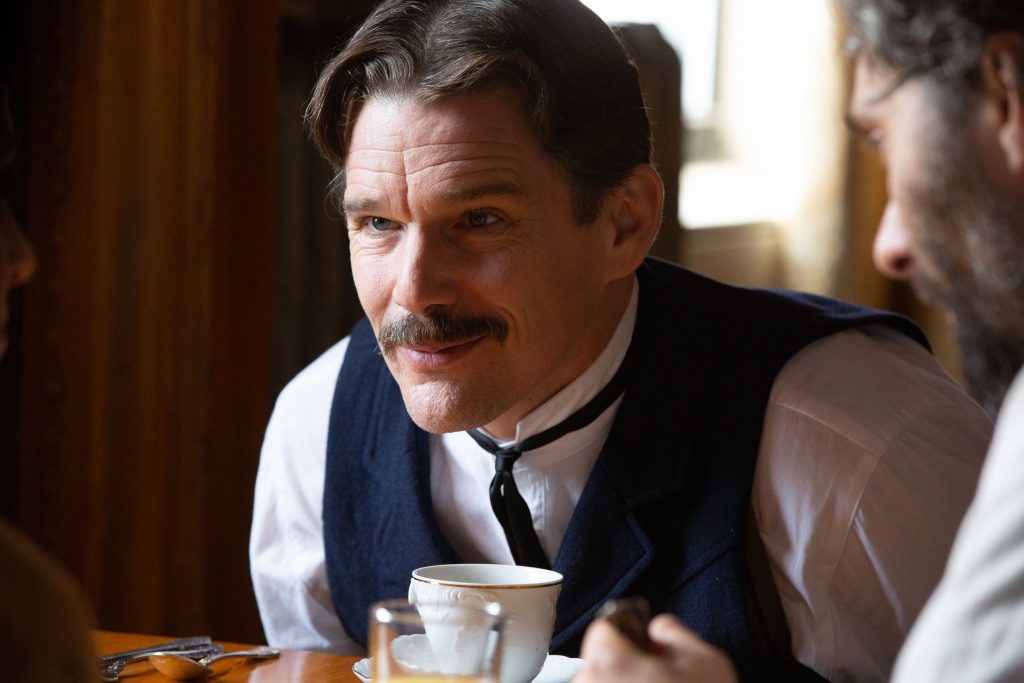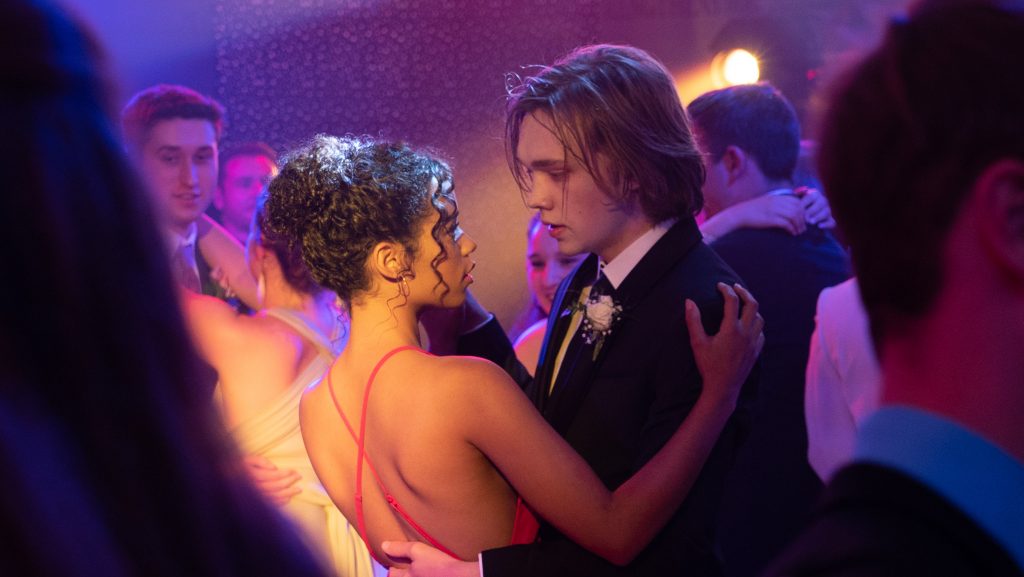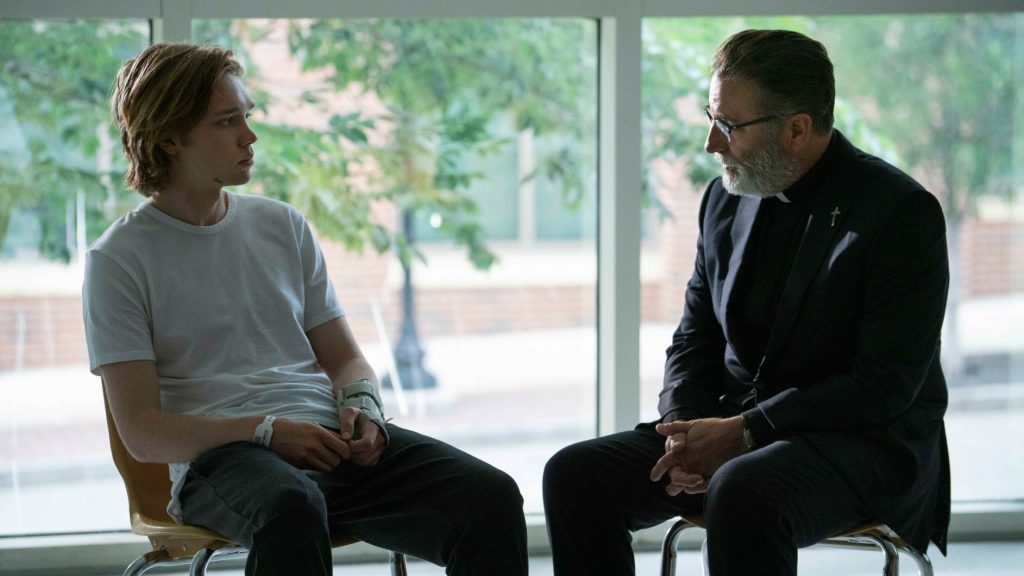August 28, 2020
by Carla Hay
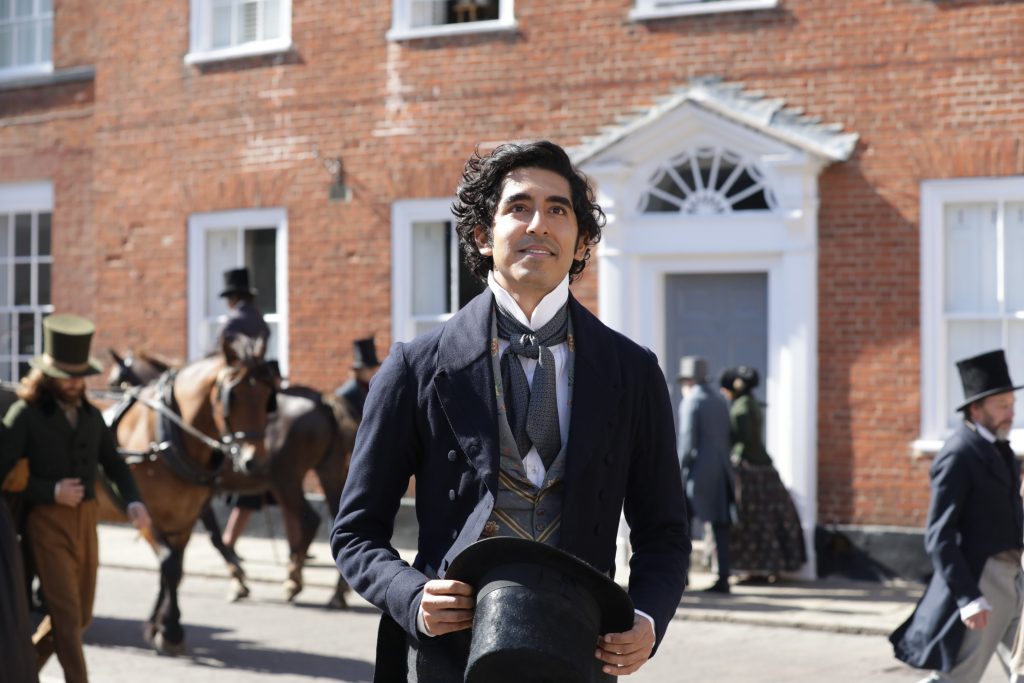
“The Personal History of David Copperfield”
Directed by Armando Iannucci
Culture Representation: Taking place in Victorian-era England, the comedy/drama “The Personal History of David Copperfield” has a racially diverse cast (Asian, white and black) portraying the middle-class and working-class.
Culture Clash: An upwardly mobile young man named David Copperfield reflects on his life, which includes a rough childhood and discrimination over his social class.
Culture Audience: “The Personal History of David Copperfield will appeal primarily to fans of the Charles Dickens book, on which the movie is based, as well to people who like modern twists on classic stories.

Writer/director Armando Iannucci brings his brand of sly and witty humor to his movie adaptation “The Personal History of David Copperfield” (based on Charles Dickens’ 1850 novel “David Copperfield”) and updates the film to have a multiracial cast in a way that is neither self-congratulatory nor self-conscious. The essence of the story, which is set in Victorian-era England, remains the same in the movie as it is in the book. But this unusual and inspired casting is one of the film’s more modern takes on the “David Copperfield” story. Let’s face it: Most filmmakers casting a movie version of “David Copperfield” would follow the predictable convention and stick to casting only white people in the main roles to reflect how the characters are described in the novel.
In “The Personal History of David Copperfield,” the title character (played by Dev Patel in the movie) looks back on his life and describes how he felt during crucial points in his journey from childhood to adulthood. That flashback concept remains intact in the movie, without an over-reliance on voiceover narration. Instead, “The Personal History of David Copperfield” has fun playing with time and space, by having the adult David appearing in the flashback scenes with the child version of David (played by Jairaj Varsani), as if the adult David has gone back in time and can see his younger self.
People who’ve read the book already know how the story is going to end. But for anyone unfamiliar with the book, the movie creates a world that is both whimsical and bleak, depending on which part of David’s life that viewers are experiencing through his memories. Some of the characters border on parody, but that’s because the movie is meant to be a snappy satire on the rigid social class system that causes much of David’s worst misery throughout his life.
The movie portrays David’s dysfunctional childhood, in which he bounces from one home to another, and he experiences many insecurities over his identity and social acceptance. David was born into a family that didn’t fully accept him as a child. This rejection is demonstrated in the movie’s opening scene that shows his mother Clara (played by Morfydd Clark) giving birth to him in Blunderstone, Suffolk, and her husband’s domineering, unmarried sister Betsey Trotwood (played by Tilda Swinton) leaving in an angry huff when she finds out that the baby is a boy, not a girl. In an Oedipal twist in this movie’s casting, actress Clark, who plays David’s mother Clara, also plays someone who becomes one of David’s love interests when he’s an adult: ditsy Dora Spendlow, who treats her Maltese dog like an inseparable child.
David’s mother Clara becomes a widow when he’s still a baby, which is a slight departure from the book, when Clara became a widow before David was born. Even though Clara has help from an optimistic maid named Clara Peggotty, also known as Peggotty (played by Daisy May Cooper), David’s mother wants a more stable home for her child (whom she calls Davy), so she sends him away more than once to live with another family.
The first time he’s sent away, it’s to live in Yarmouth with Peggotty’s brother Daniel Pegotty (played by Paul Whitehouse), a fisherman who lives in an upside-down boat parked on the sand. Daniel lives with three other people: two teenage orphans named Ham (played by Anthony Welsh) and Emily (played by Aimée Kelly) and an elderly woman named Mrs. Gummidge (played by Rosaleen Linehan). Ham and Emily become fast friends with David. It’s one of the happiest times in David’s childhood, as he finds complete acceptance in this family, which calls him Master Copperfield.
When his mother sends for David to come back to live with her, he finds out that his mother has married a cruel tyrant named Edward Murdstone (played by Darren Boyd), who has an equally horrible sister named Jane Murdstone (played Gwendoline Christie), and the siblings both treat young David as if he’s a wretched nuisance. Jane is so hateful toward David that she calls him “it,” while Edward get physically abusive if David doesn’t obey his orders.
During an incident in which Edward begins to beat up David because David couldn’t show that he had completed his education lessons, David bites Edward’s hand and almost gets away from him. David mother’s Clara just passively does nothing but cry while her son is being beaten. Soon after this incident, David is, in his words, “banished to London,” where he is forced to work in a wine bottling factory that is partially owned by the Murdstone family.
David finds out that his boss knows about the abuse incident in which David bit Edward Murdstone’s hand in self-defense, because when David defies his boss’ orders, David is forced to wear a sign on the job that says, “He bites.” It’s another way that David is humiliated and made to feel like an outsider. David is also given a different first name at almost every place he lives, which also adds to his insecurities over his identity and sense of not really belonging anywhere.
A series of incidents lead David to some more homes until he reaches adulthood. He lives for a period of time with debt-ridden married father Mr. Wilkins Micawber (played by Peter Capaldi), who rescues David from a street altercation. Estranged aunt Betsey Trotwood then lets David live with her, on the condition that David change his first name to Trotwood. David is also sent to live in a boarding school, where he meets James Steerforth (played by Aneurin Barnard), a popular and privileged older student who insists on calling David the nickname Daisy. It’s an obvious way for Steerforth to show his dominance and emasculate David, who greatly admires Steerforth and wants to be accepted into Steerforth’s clique.
While living with his aunt Betsey, David meets some other people who have a major impact on his life. They include the eccentric Mr. Dick (played by Hugh Laurie), who has deep admiration for Betsey; an alcoholic lawyer named Mr. Wickfield (played by Benedict Wong); Mr. Wickfield’s daughter Agnes (played by Rosalind Eleazar), who becomes a close friend/adviser to David; Uriah Heep (played by Ben Whishaw), Mr. Wickfield’s nervous-tempered clerk; and the aforementioned Dora Spendlow, whom David becomes infatuated with immediately upon meeting her.
After being treated as an inconvenience for most of his childhood, David starts to gain confidence and a sense of his true self. He develops an unexpected friendship with Mr. Dick, who seems like an antisocial grouch (and who is probably mentally ill, since Mr. Dick hears voices no one else can hear) until David makes a kite and he flies the kite with Mr. Dick. This carefree activity lifts Mr. Dick’s spirits and he begins to trust and open up to David.
And as David becomes more educated at the boarding school, his job prospects improve. He decides to become a proctor because Dora’s father is a proctor. David becomes so enamored with Dora that all he can think about is eventually marrying her. There’s an amusing montage in the movie demonstrating David’s amorous obsession for Dora, by showing that he imagines seeing Dora in the faces of several people in his life.
Although “The Personal History of David Copperfield” is nearly two hours long (116 minutes, to be exact), the movie has a brisk and energetic pace that Iannucci is known for, as seen in his previous films 2009’s “In the Loop” and 2017’s “The Death of Stalin.” Characters are often quirky and/or sarcastic, with Swinton (as Betsey Trotwood) and Laurie (as Mr. Dick), standing out as the kookiest personalities of the bunch. Their eccentric nature is ironic because Betsey and Mr. Dick are not the more sympathetic characters, but they are the ones who set David on a path to having a stable home life. Patel and Whishaw also do quite well in their respective roles, as their personalities go through a metamorphosis.
The movie’s production design by Cristina Casali and the cinematography by Zac Nicholson wonderfully bring to life David’s memories that are a reflection of his emotions and maturity level at the time of his memories. The brightly colored Boat of Peggotty house from his childhood is shown as almost like a fantasy playhouse on the inside. The bottle factory is dark and oppressive. And the scenery around David becomes warmer and more sophisticated as he starts to grow up and becomes more educated, independent and self-assured.
On the surface, “The Personal History of David Copperfield” doesn’t seem to have much appeal to people who have no interest in seeing a movie that takes place in 1800s England. However, much of the themes and social commentary in the story remain relevant to modern audiences. And if people want to see a witty version of a Dickens classic in a movie that doesn’t follow all the predictable ways of telling the story, then “The Personal History of David Copperfield” delivers this experience in a frequently amusing way.
Searchlight Pictures released “The Personal History of David Copperfield” in select U.S. cinemas on August 28, 2020. The movie was released in the United Kingdom in January 2020.

